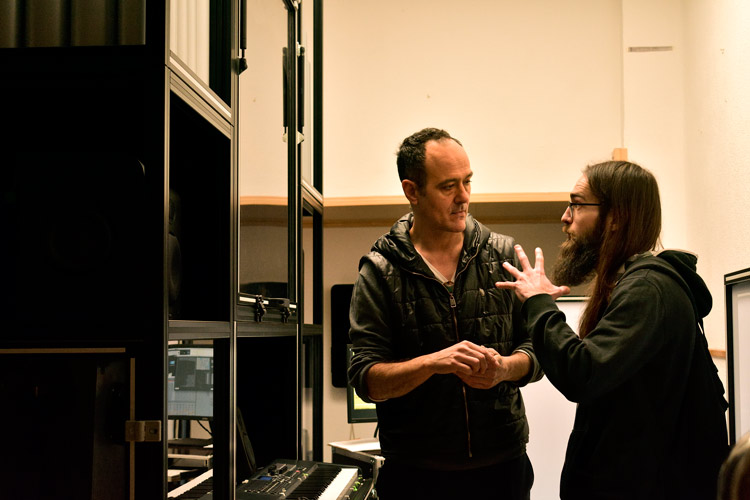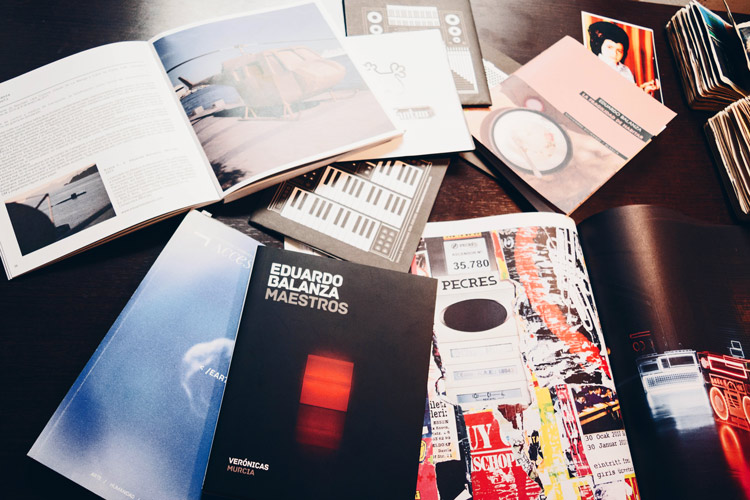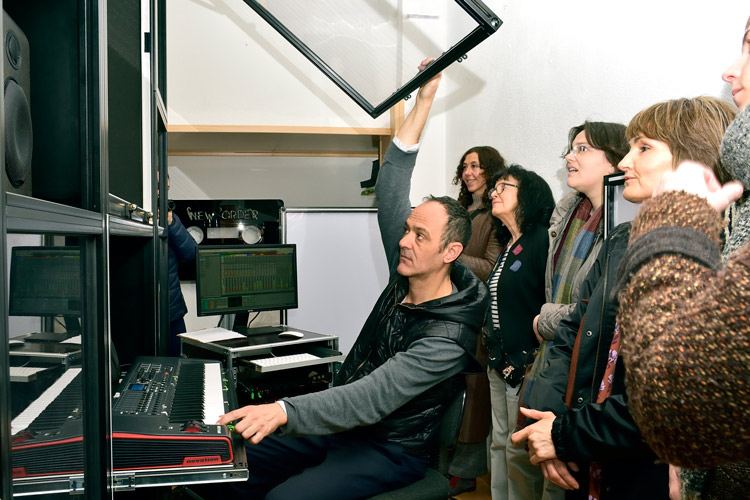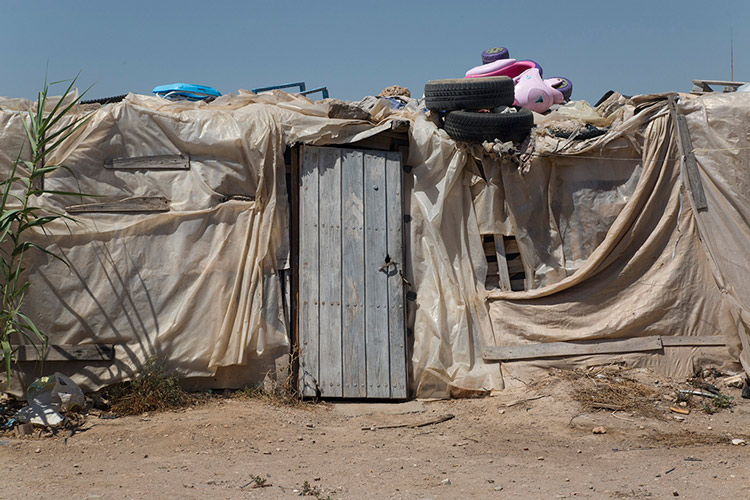AND EDUARDO BALANZA OPENED UP THE DOORS OF HIS STUDIO…
May 27, 2020
art madrid
The difficult task of defining Eduardo Balanza's work becomes easier when you share a live experience with him. We enjoyed a visit to his studio on Saturday, February 22, within the “Art Madrid-Proyector'20” action program. It was the perfect opportunity to getting to know his work and personality, and to understand the clear connections that exist between his various works. Between eclectic, versatile, technological, experimental, audiovisual, editorial... and many other qualifications applicable to the work of this author, the encounter with Eduardo helped us discover a generous artist, concerned above all with socio-political and environmental issues, who apply technology in a very rational way to his projects, and who is not satisfied with a simple reading of his pieces.

Eduardo Balanza (Murcia, 1971) graduated in Audiovisual Media, studied documentary film and screenplay at the International School of Film and Television in Havana, as well as at the School of Visual Arts in New York. He needs to travel, and for several years he was roaming between Berlin and Spain while working in theatre companies as a set designer. As a plastic artist, he has developed a multidisciplinary work taking sound and music as a starting point on which to research and build pieces, installations and performances. However, even these attempts to explain his career fall short, since, although the influence of video is evident in many of his works, in others the construction of artefacts or the emergence of conceptual discourse through periodic publications are the essence of the piece. As he himself admits: "It is true that I studied photography, screen printing, 3D, I worked in cinema, in fashion as a photographer, advertising and campaigns, theatre... The multidisciplinary involves attitude and creative concern." Indeed, Eduardo is attitude and concern.

What is clear is that Eduardo Balanza shows great humility and transparency in all his work. The transformation of each life experience into learning reveals the complexity of our world, the diversity that inhabits it, the different ways of understanding that exist and the need we have to adapt ourselves, beyond pure survival. In a recent interview, Eduardo explained: “Living has also become a bit of resistance. Living requires adaptation, as in an ice age." And part of that adaptation consists of admitting mistakes, knowing how to rectify because nothing is linear and today's society imposes on us a dictatorial obligation of permanent success totally fake without margin for error. On this, the artist comments:
Sometimes failure is pleasant. You have to lose battles, be thrown into the mud and have to get up. There is no need to be afraid to start from scratch; from failure, you learn a lot. We get frustrated very quickly, we have no stamina.

This humanistic approach to his own life trajectory has made identity, music and war his three main axes of work. Music as a factor of union, and war, of separation, and underlying these opposing forces, which sometimes collide and sometimes point in the same direction, is the collective identity. The artistic exploration of these intangible realities, but drivers of many current social movements, transforms into an infinity of projects that this author develops from his personal experience, wanting to transfer to his works all the rawness, aridity and harmony that the real world offers us. Eduardo explains that:
Where culture does not arrive, barbarism arrives. ... There is a clear absence of many values. Music, identity, collective identity, group movements are trending and the most interesting thing right now is collage. War, music and identity are my subjects, in the end, everyone talks about the same thing.
During the visit to his studio in Madrid, Eduardo presented us with the artwork “B71”, an electroacoustic instrument inspired by the baroque organs that combines sound and technology with an impressive result. The B71 organ is an instrument that works activated by vibrating loudspeakers on plates capable of connecting to meteorological data websites, according to the coordinates entered in the system to generate surround music based on loops. B71 works in both manual and automatic modes, generating its own sounds by itself. Visitors were able to fully understand its operation and test the organ while Eduardo explained all the technical implications of this installation work.

In addition to this and to know some of his editorial pieces in the FEU project: United Electronic Front, we were also able to enjoy his work on video. In the garage of his studio, which acts as a projection room, we watched his latest proposal: “La fragilidad de habitar”, a documentary video art work that shows the situation of extreme need in the shanty towns of temporary workers in Níjar (Almería). This piece, made in 2019, created mostly from zenith planes, brings to light a reality often ignored and shows ways of life-based on absolute subsistence. Today the work is on display at the Cepaim Foundation in Madrid.
And in the meantime, Eduardo continues working. He is currently developing some video research on hydroelectric complexes in Norway, the "Landscape Transformation" and the generation of sounds in these natural spaces, supported by the Skien Komune from Telemark.
From here we thank him for opening the door of his studio and sharing an excellent Saturday morning with us as we learned a little more about his work.


















